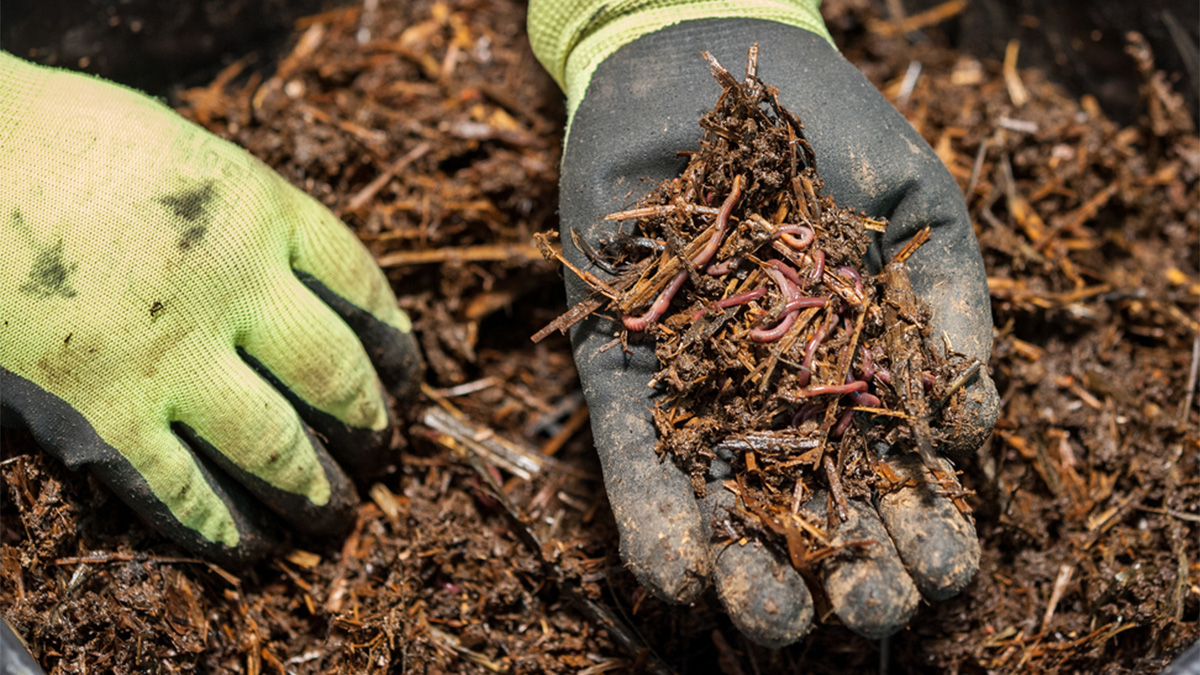Why Every Gardener Should Start a Worm Farm

If you’re looking for an easy, eco-friendly way to improve your garden and reduce food waste, a worm farm might be just what you need. These simple systems turn kitchen scraps into nutrient-rich compost using the natural power of worms. Whether you’re a beginner or a seasoned gardener, worm farming is a practical and rewarding addition to any garden routine.
The basics of worm farming
A worm farm is a controlled composting system that uses worms to break down organic matter into nutrient-rich material called worm castings. It’s an efficient, natural way to recycle kitchen scraps while improving your soil. Unlike common garden worms, composting worms like red wigglers are best suited for this type of setup.
Worms thrive in moist bedding made from shredded paper, coconut coir, or cardboard. The bin needs to be well-aerated and kept in a shaded area out of extreme heat or cold. When conditions are right, worms will quietly turn your waste into black gold for the garden.
The incredible benefits of worm castings
Worm castings are one of the most nutrient-dense organic fertilizers available. They contain a balanced mix of nitrogen, phosphorus, potassium, and beneficial microbes that support plant health. Castings help retain moisture in the soil while improving structure and drainage.
Compared to traditional compost, worm castings are finer, less bulky, and more immediately available to plants. They’re also less likely to burn delicate roots, making them safe for seedlings and indoor plants. Gardeners who use castings regularly often see stronger growth and higher yields.
Worm farms reduce household waste
Worm farms can significantly cut down on the amount of kitchen waste that ends up in the trash. Vegetable peels, coffee grounds, tea bags, and even crushed eggshells can all be added to your worm bin. Over time, worms will consume these scraps and convert them into usable compost.
Avoid feeding worms meat, dairy, oily foods, or anything too spicy or salty, as these can create odor issues or harm the worm population. Sticking to plant-based scraps ensures a healthy and odor-free system. Even in small households, worm farms can make a noticeable difference in reducing landfill waste.
Boosting garden productivity naturally
The castings and worm tea produced by your worm farm can be used directly in the garden to give plants a natural boost. Worm tea, which is made by soaking castings in water, can be sprayed on foliage or poured into the soil for a fast-acting dose of nutrients. It’s especially helpful during transplanting or periods of stress.
Worm castings encourage root development and help plants resist pests and diseases. Many gardeners report healthier tomatoes, larger flowers, and more vibrant leafy greens after adding worm castings to their soil. This method is also a great option for organic gardeners looking to avoid synthetic fertilizers.
Low-maintenance and space-efficient
Worm farming doesn’t require much space, making it ideal for small backyards, patios, or even apartments. A simple plastic bin or stackable worm tower can be tucked into a corner or placed under a sink. Once set up, a worm farm requires only occasional feeding and monitoring.
Maintenance mainly involves checking moisture levels, adding bedding when needed, and harvesting castings every few months. With minimal time investment, you can produce a continuous supply of compost. It’s a sustainable system that fits easily into most lifestyles.
A great option for kids and beginner gardeners
Worm farms are a great way to introduce kids to composting and the concept of closed-loop systems. Children can help feed the worms, check on their progress, and eventually harvest the castings. It’s a hands-on, educational project that ties in well with science and environmental learning.
For beginner gardeners, worm farming is a low-risk and rewarding introduction to composting. There’s no need for large outdoor piles or complicated processes. Watching food scraps transform into rich soil can be both satisfying and motivating.
Common concerns and how to avoid problems
Some people worry that worm farms will smell or attract pests, but when managed properly, they are clean and odor-free. Odors usually only arise from overfeeding or poor ventilation. By sticking to appropriate food scraps and avoiding excess moisture, you can keep your worm farm fresh and healthy.
If worms try to escape, it’s often a sign the bin is too wet, too dry, or lacking food. Regular checks and adjustments can keep conditions balanced. Should problems occur, they’re usually easy to fix with a little observation and a few small changes.
How to get started with your own worm farm
Starting a worm farm is simple. You’ll need a bin with a lid, bedding material, a supply of red wiggler worms, and a small amount of food scraps to begin. You can buy worm bins or make one from a plastic tote with air holes.
Red wigglers are often sold online or at garden centers and composting workshops. Begin by layering damp bedding in the bin, adding your worms, and placing a small handful of food on top. Keep the bin in a shaded area, check the moisture regularly, and within a few weeks you’ll start seeing compost build up.
Conclusion
Starting a worm farm is a small step with big rewards. From boosting soil health to cutting down on waste, it’s a low-maintenance solution that benefits both your garden and the environment. With just a little effort, you can turn everyday scraps into a powerful gardening resource and enjoy healthier, more vibrant plants year-round.
